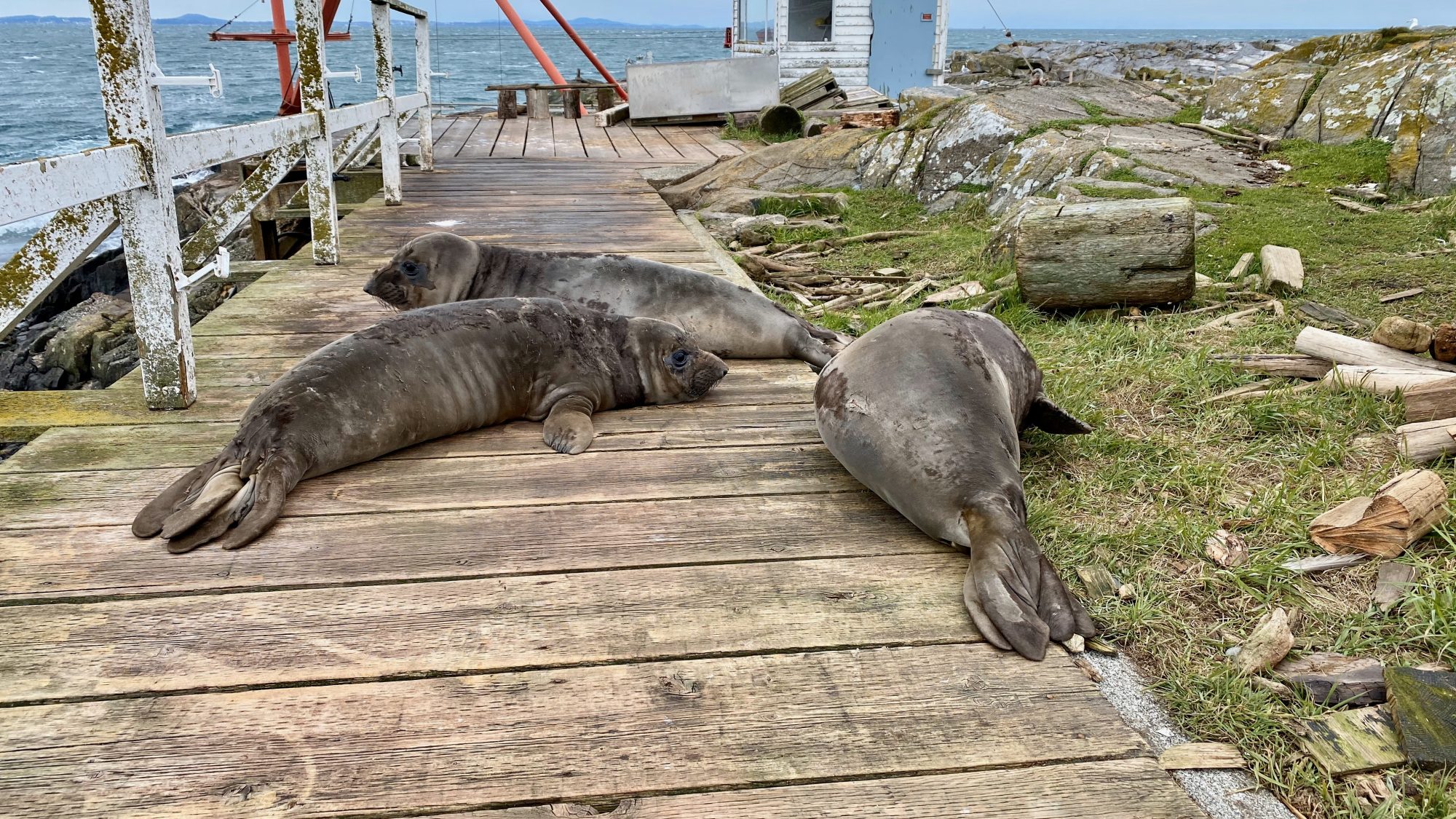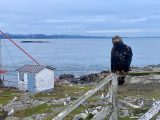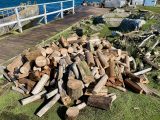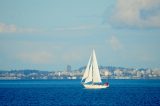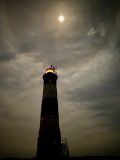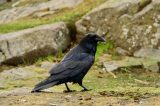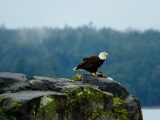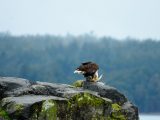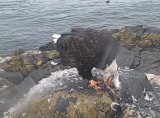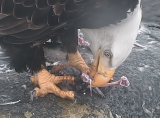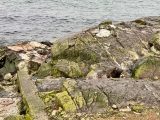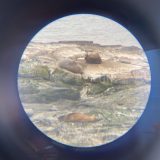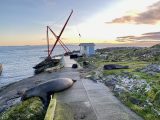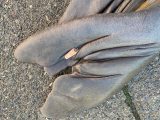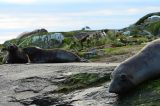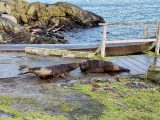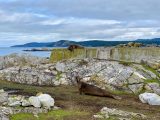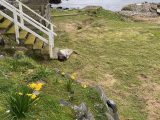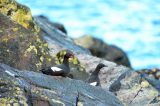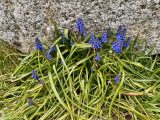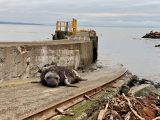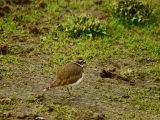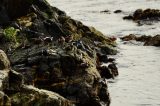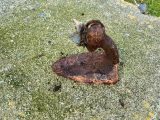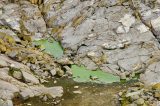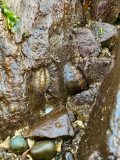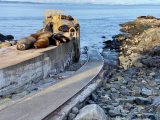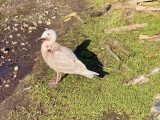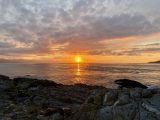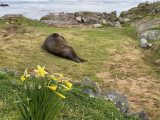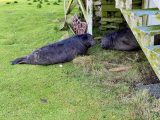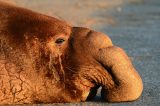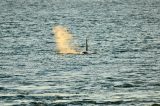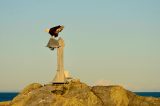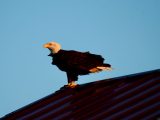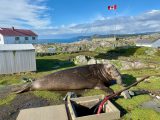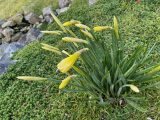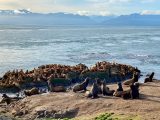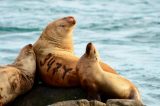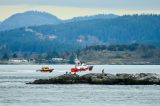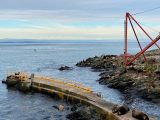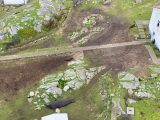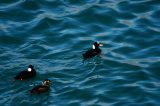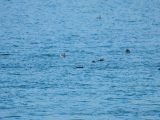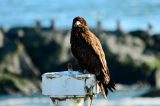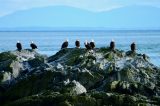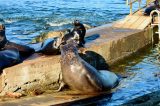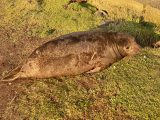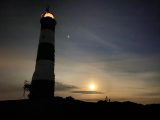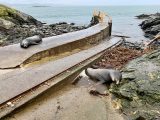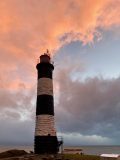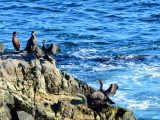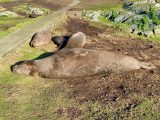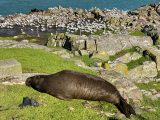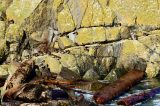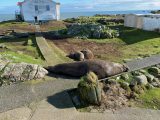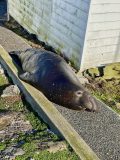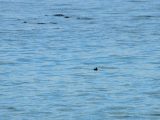Wind: yesterday 2-27 knots from NE to W, today 2-27 knots from W to E
Sea State: yesterday rippled in am and calm in pm, today rippled then calm in evening
Visibility: yesterday 10-15 NM, today 5-15 NM
Sky: yesterday clear, today partly cloudy with sunny patches
Temperature: yesterday 4-8 °C, today 6-8 °C
Atmospheric CO2: 414.36 ppm (recorded by NOAA at Mauna Loa Observatory, Hawaii)
A varied thrush was seen on Race Rocks today. The bird that has similarities in size and colouring to an American Robin, hasn’t been seen this winter and possibly never before on Race Rocks. There is no mention of other sightings on this website. According to the Audubon field guide, varied thrushes like dense forests with lots of water. That’s about as different as you can get from Race Rocks, where there are no trees or fresh water. Perhaps this bird was flying over the Strait and stopped for a rest.
There were 20 pigeon guillemots near the jetty yesterday. They swam around, perched on rocks and the edges of the jetty. None were seen today.
The elusive river otter was seen today. It was sunning itself on a log on the rocks below camera 5. When it saw me taking photos from about 30 m away, it went around the corner and continued to soak up the sun.
Over the past few days, I have been trying to tidy up the human items left on the ground, before the grass and other plants grow up around them. There are many old hoses in various places that were at one time used for gardening and washing buildings. I have collected all the old hoses so they don’t interfere with the animals. Black plastic sheets that were used for landscaping at the base of the tower and around the main residence were becoming exposed. I removed all the pieces of plastic that have worked their way to the surface.
There were seven visitors to the island yesterday from Ocean Networks Canada. They spent several hours calibrating the CODAR equipment that measures near-surface ocean currents for the central portion of the Juan de Fuca Strait.
Yesterday, other than the Pearson College boat, Second Nature, there were two tour boats in the ecological reserve. Today, four tour boats, one sailboat and two pleasure boats were around Race Rocks.
Below are the results of the weekly census observed on Saturday, February 22. The numbers are substantially lower for almost every species regularly seen over the winter. Perhaps the relatively clear and calm conditions of this past week have encouraged the birds and marine mammals to venture further from their winter retreat on Race Rocks.
6 elephant seals (3 adult males, 2 female pups, 1 male pup)
8 steller sea lions
60 california sea lions
30 harbour seals
1 river otter
6 bald eagles (3 adults, 3 juveniles)
2 Canada geese
1 raven
20 brandt’s cormorants
10 double-crested cormorants
62 pelagic cormorants
101 gulls (mostly thayer’s gulls)
6 black oystercatchers
10 harlequin ducks
30 surfbirds
10 black turnstones
1 varied thrush
1 snow bunting
1 song sparrow
1 fox sparrow
UPDATED February 26: Photos have been uploaded now that the website is fixed.
-
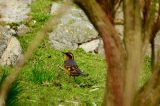
-
Varied thrush
-
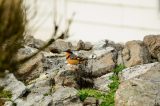
-
Varied thrush
-
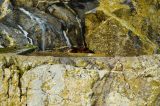
-
A river otter resting on log underneath the camera 5 on the rocks.
-
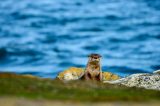
-
River otter
-
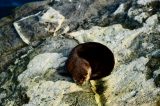
-
Another napping place in the sun for the river otter
-
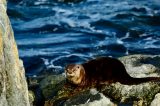
-
River otter heading towards the water
-
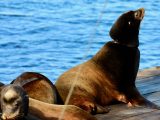
-
This california sea lion was rescued by the Vancouver Aquarium’s Marine Mammal Rescue Centre, in November. It had a wound on its neck from a plastic strap. It has been seen here a few times since and appears to be doing well. It was tagged VA017 on its flippers when it was rescued.
-
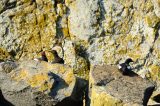
-
Pigeon guilllemots on the rocks by the jetty. I think they look like clowns with their bright red mouths and big red feet.
-
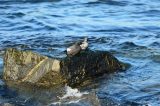
-
The pigeon guillemots on the right still has its winter plumage.
-
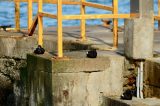
-
Three pigeon guillemots resting on the jetty
